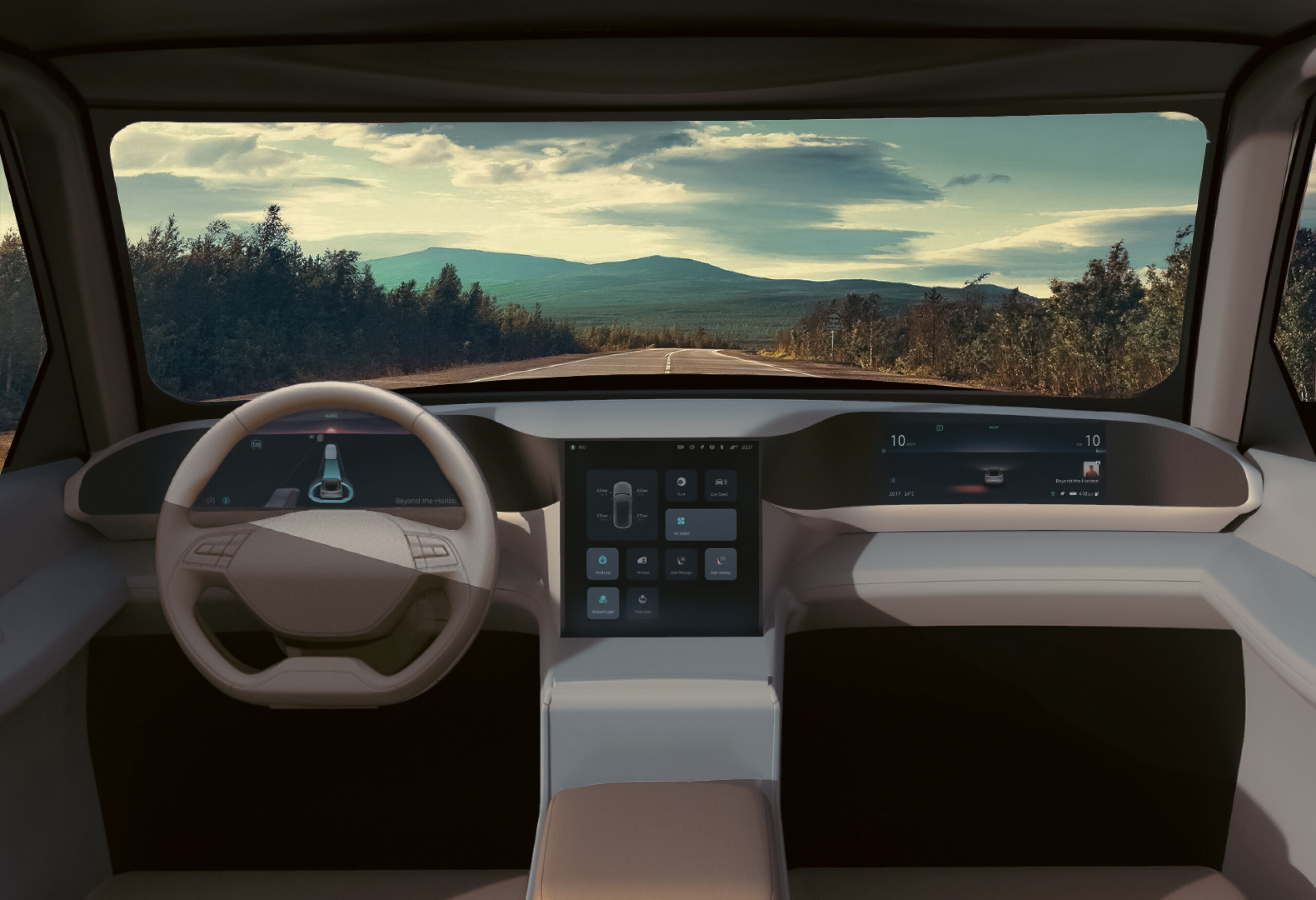
Abstract
A collaboration between Bosch and Grupo Antolin, aimed at exploring the integration of new technologies into the future car experience, with a focus on providing an all-in-one solution to OEMs. The project involved the industrial design of the future interior cockpit of a car, incorporating Shy tech, flexible OLEDs, hidden displays, and morphing buttons, to create a visually consistent and understatedly elegant design that declutters the driver and passenger areas of the vehicle.
Extensive user experience research and design activities were conducted before creating a user interface that needed to meet the needs of drivers as well as the co-passengers. The resulting design features interfaces for an instrument cluster on the driver side, a central console with a sliding OLED display, and a co-driver display. These displays offer a range of functionality and features, such as GPS navigation, climate control, music playback, and more, all designed to be intuitive and easy to use.

The project’s main goal was to provide a one stop solution to OEM customers that integrates new technologies into the car cockpit seamlessly. Being a B2B project, in-depth details of the project are proprietary and bound by contract agreements and NDA’s, therefore the end to end execution activities have only been mentioned briefly.
Research
Key stakeholders and target user groups were systematically identified and validated using the Sinus Milieus tool, tapping into its extensive psychographic repository. The research process commenced with user interviews structured as an experiential workshop, facilitating the gathering of crucial insights and data points to shape the upcoming design journey. It’s worth noting that the research was confined to the demographics of Germany and the EU, indicative of the targeted OEM landscape.
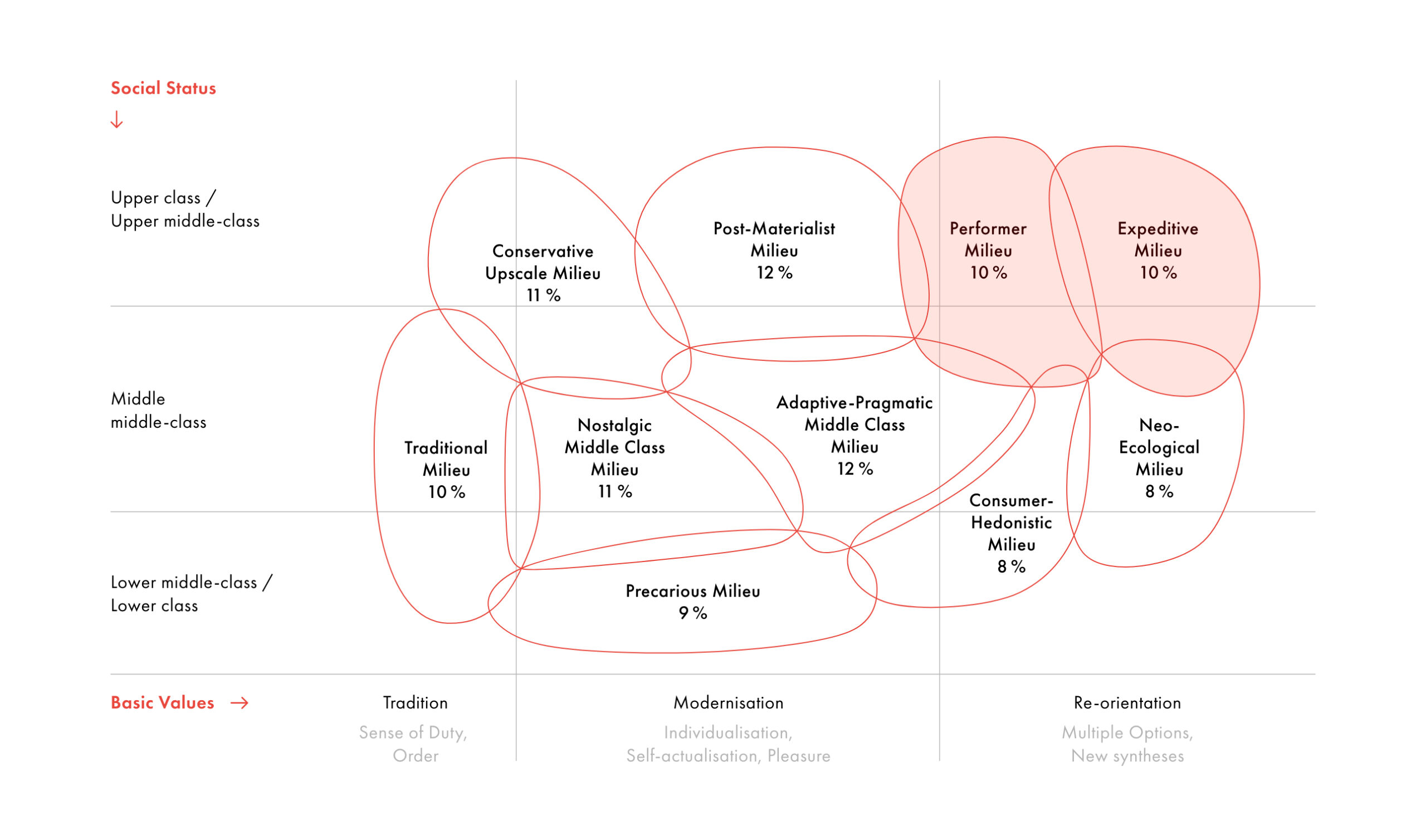
The Generative research led to uncovering insights into anticipated use cases and potential features for integration into the cockpit dashboard. Participants were particularly queried about their envisioned experiences within the vehicle and the visual aesthetics they anticipate from a forward-looking luxury automobile.
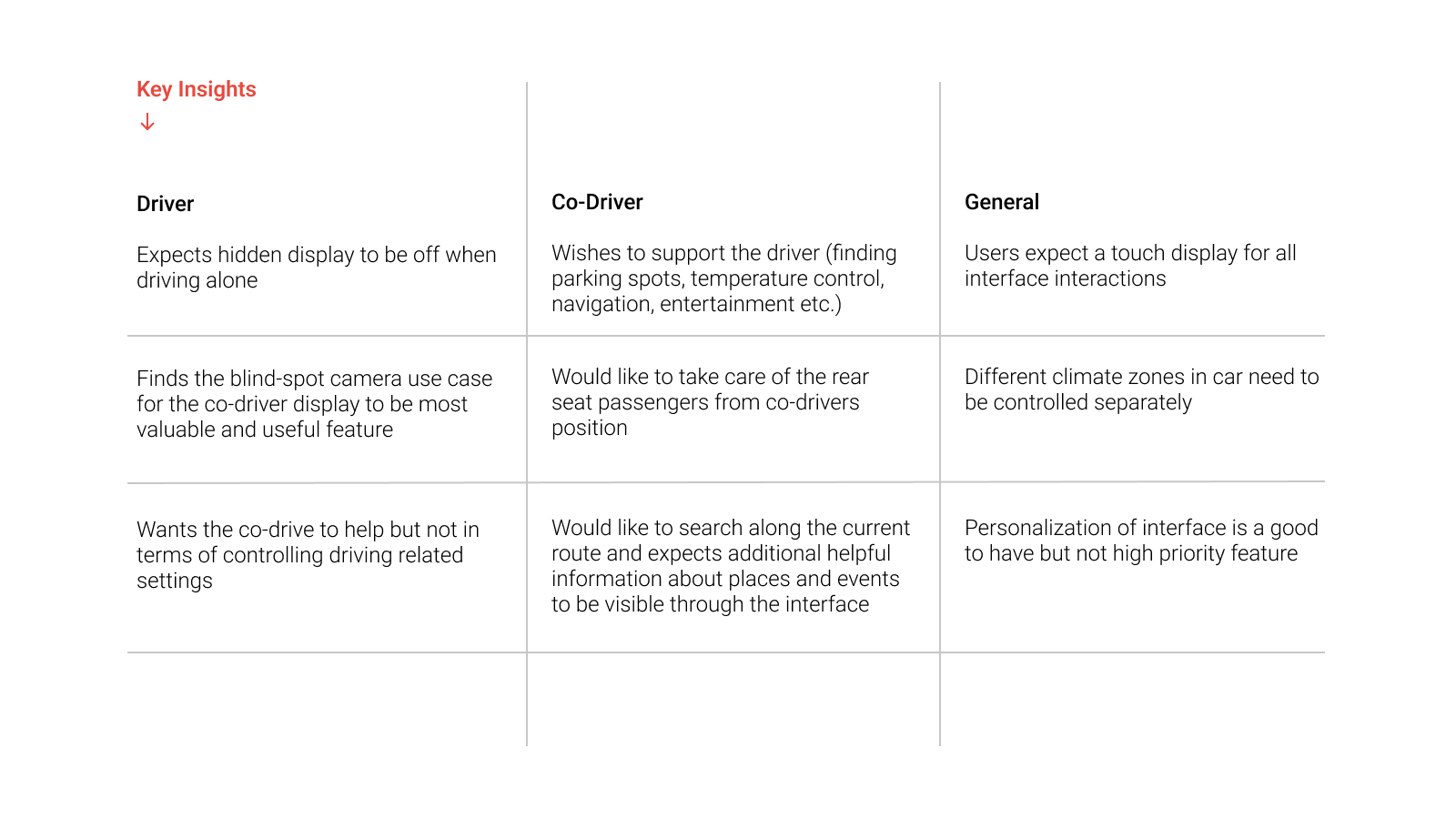
User Experience
User flows for various scenarios were charted using flow diagrams and subsequently, after testing the initial wireframes with users, the information architecture was solidified and the low-fidelity prototypes were refined to incorporate insights and feedback from the usability testing exercise.
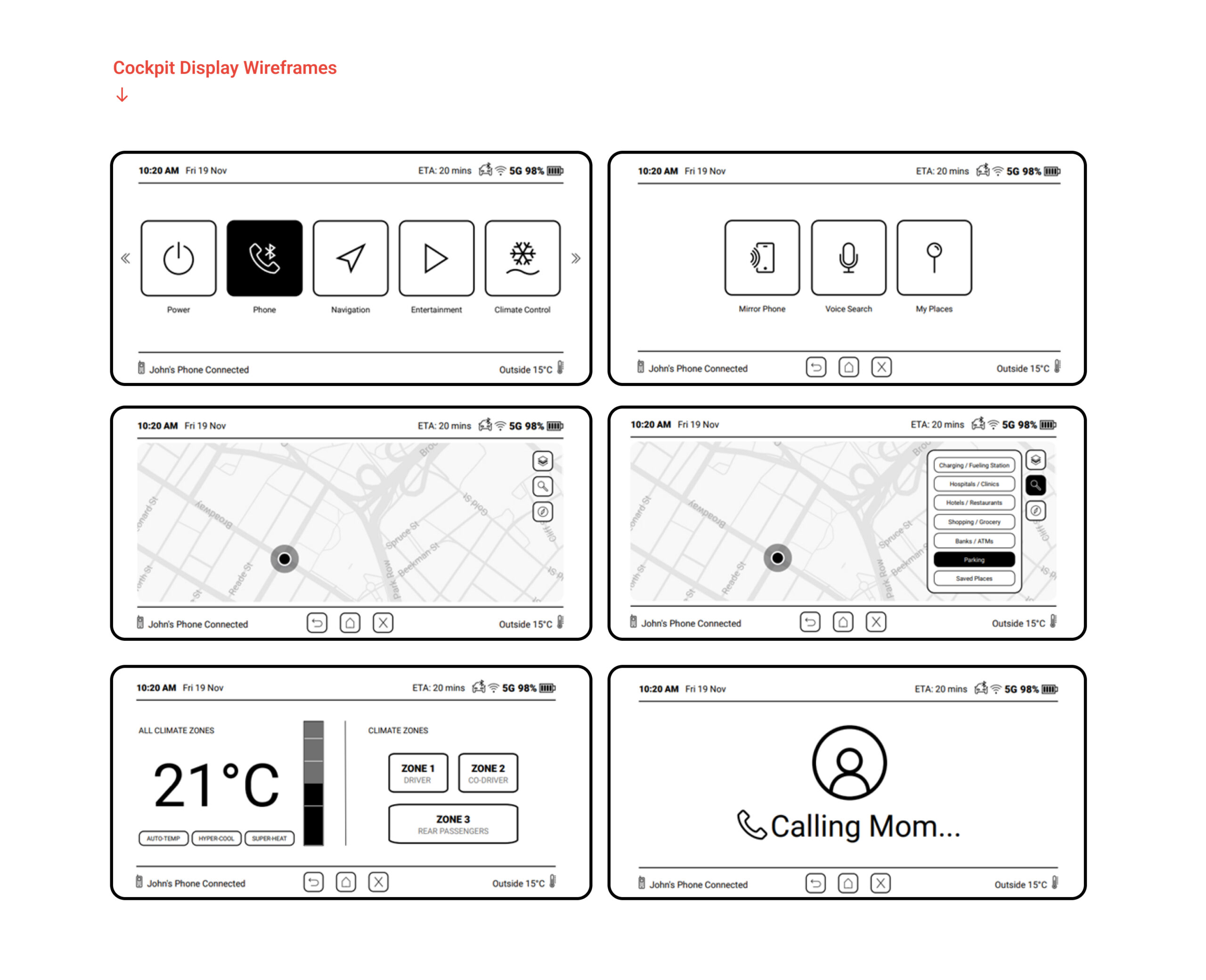
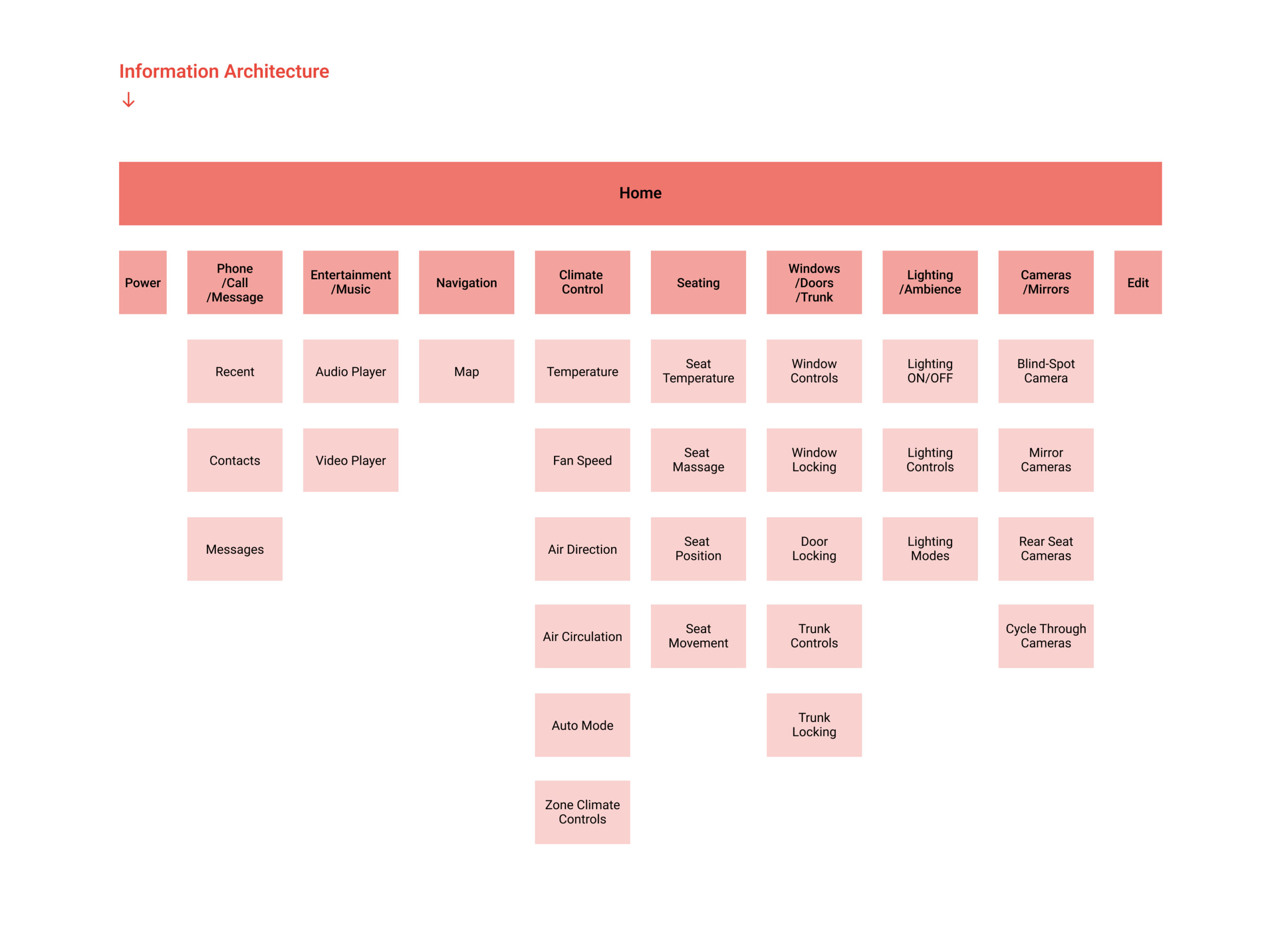
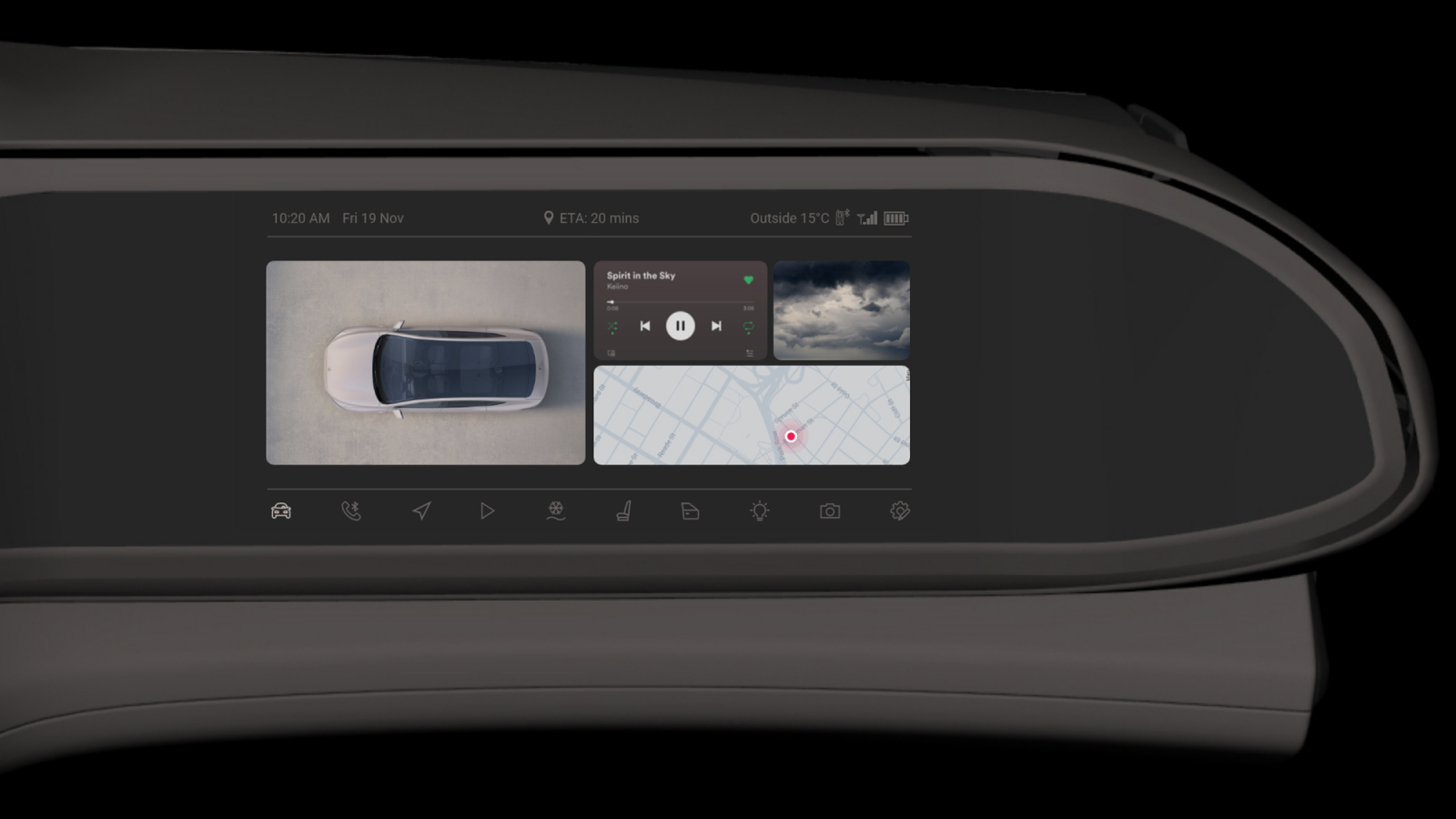
User Interface
It was crucial to meet responsive guidelines and adhere to automotive standards when developing the final UI. The final high-fidelity screens were designed in alignment with the specifications established in the preceding exercise and extensively tested on a live dashboard set-up.
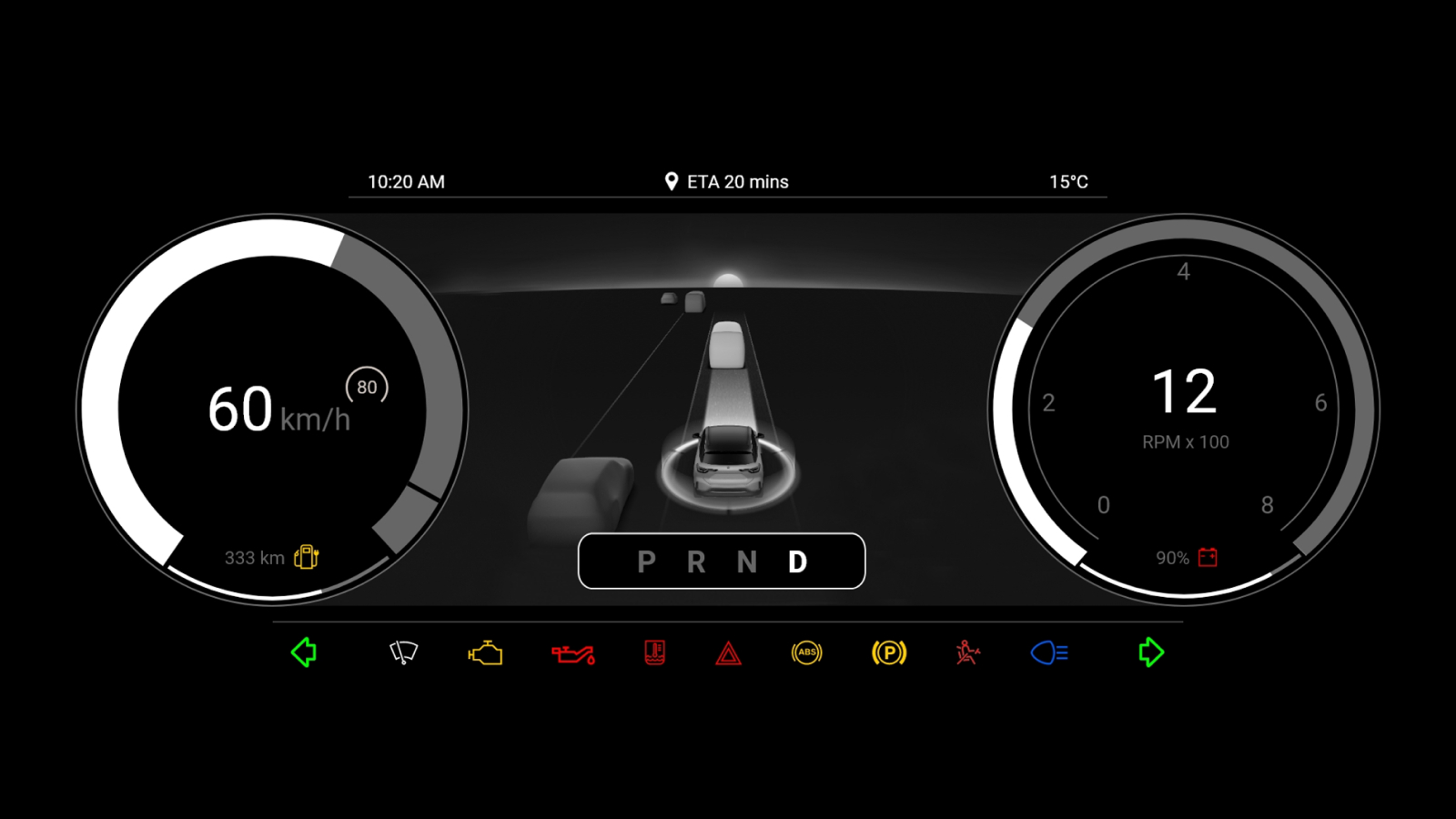
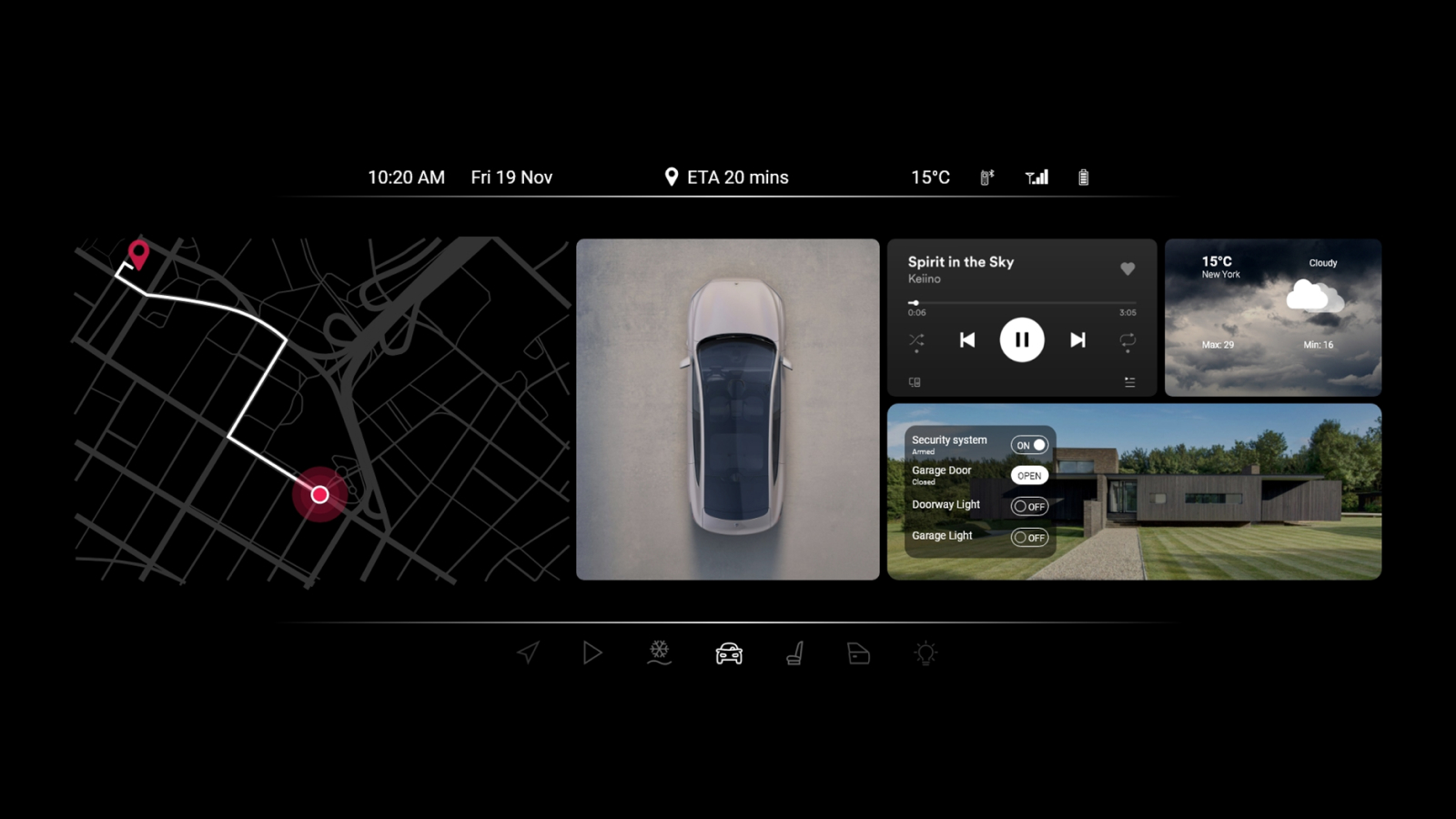
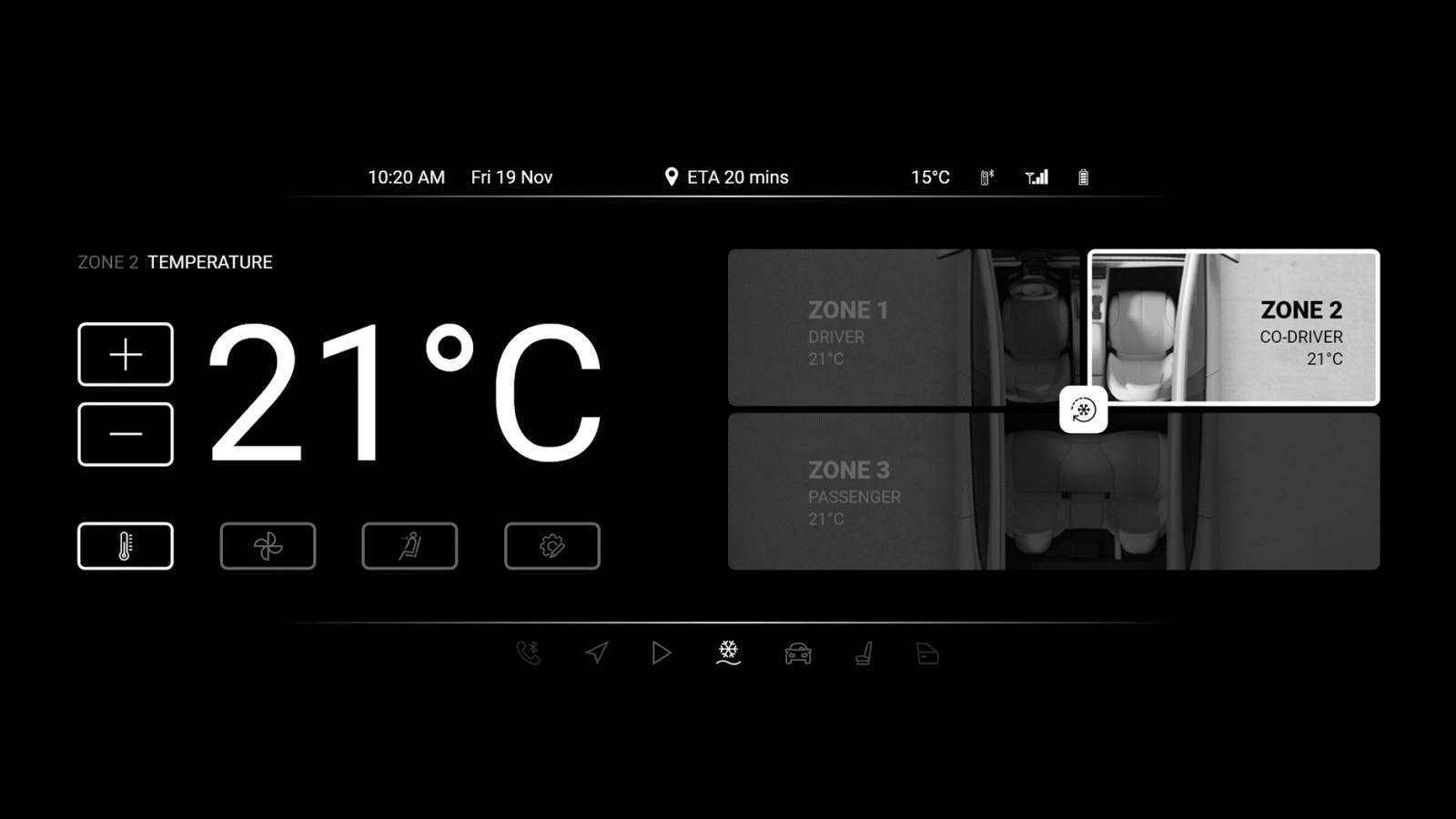
The final design of the cockpit dashboard was an iterative adaptation of the Nio SUV (also developed by Grupo Antolin). Through precise modifications and innovative remodeling a new look dashboard was developed in partnership with the manufacturing teams in Spain and Germany.
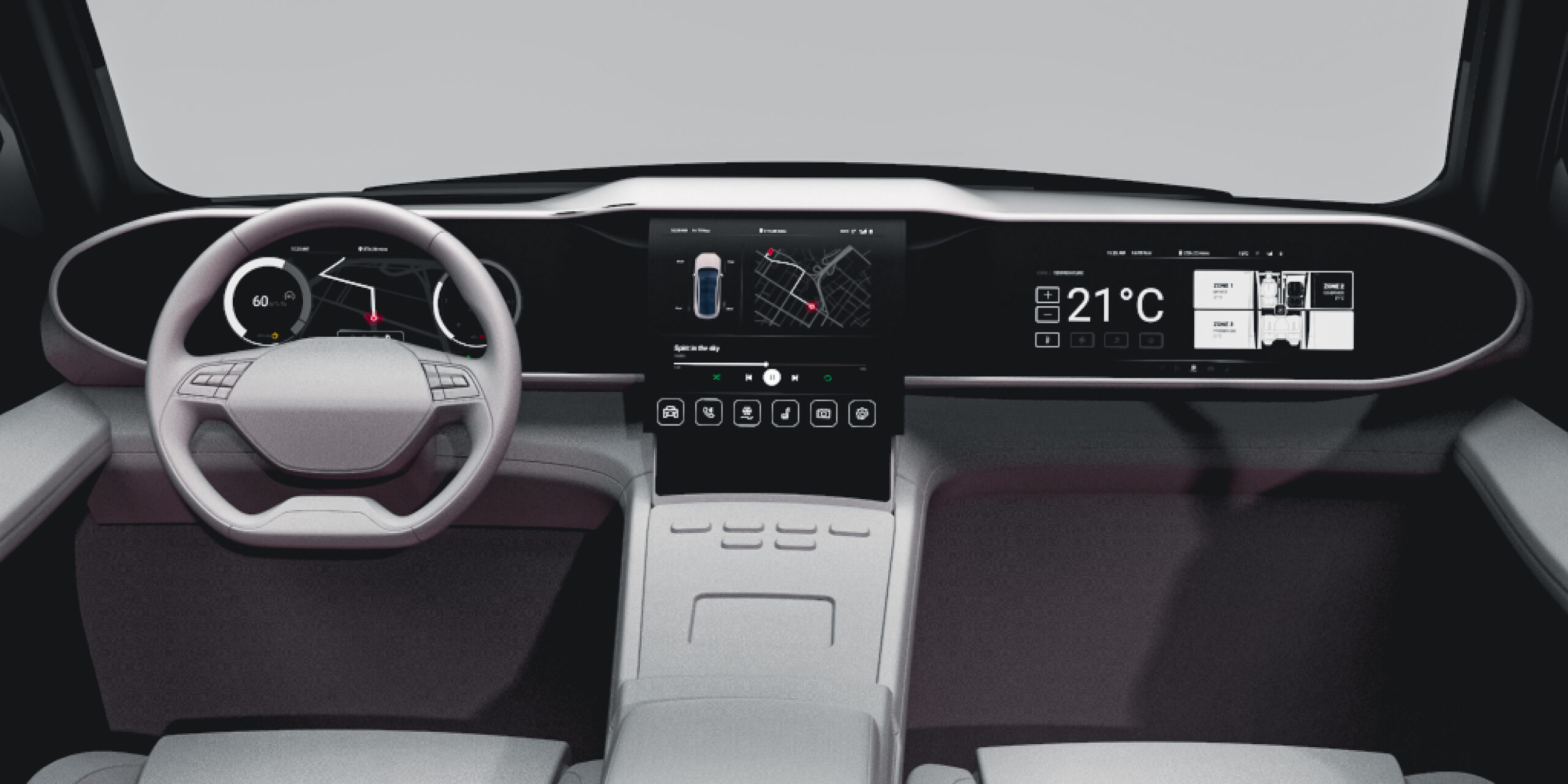
Click Here for an in depth look at the project case study (page 21 onwards).
